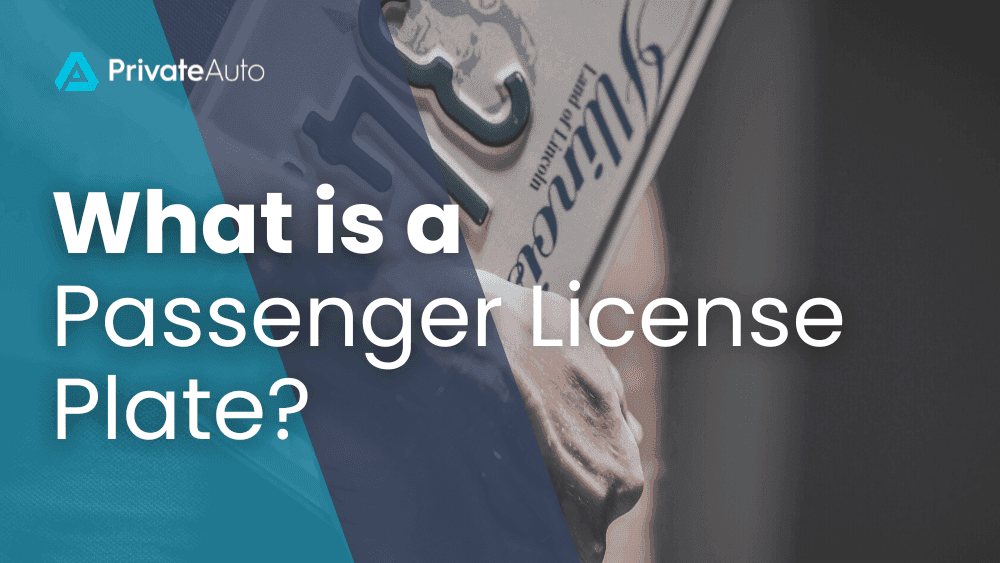What Is A Passenger License Plate?
A passenger license plate is the most common type of license plate. It is used on passenger vehicles, such as cars, vans or SUVs. Passenger license plates have a simple design with the name of the state and a numbering system that is easy to read.
Passenger license plates must be renewed on a regular basis, and drivers typically have the option to choose from a variety of different designs. In some states, passenger license plates can also be personalized with a custom message or image.
What Is A License Plate?
A license plate is a metal or plastic plate that is attached to the front or back of a vehicle. The plate typically contains the vehicle's registration number, as well as other information such as the state or province of registration.
Passenger license plates are a rectangle measuring 6 inches by 12 inches for all cars, trucks, and trailers. Motorcycle license plates are smaller, measuring 4 by 7 inches.
License plates are made out of aluminum, which is durable and resistant to rust.
In the United States, license plates contain between six and eight characters. The number of characters varies by state.
All states require vehicles to have a rear license plate. Some states require a front license plate, while others do not.
Regardless of the state you live in, it's important to follow the law—and make sure your license plate is installed properly.
Passenger license plates are a rectangle measuring 6 inches by 12 inches for all cars, trucks, and trailers. Motorcycle license plates are smaller, measuring 4 by 7 inches.
License plates are made out of aluminum, which is durable and resistant to rust.
In the United States, license plates contain between six and eight characters. The number of characters varies by state.
All states require vehicles to have a rear license plate. Some states require a front license plate, while others do not.
Regardless of the state you live in, it's important to follow the law—and make sure your license plate is installed properly.
License Plate Types
There are many different types of passenger license plates: standard license plates, vanity or personalized license plates, and digital license plates. Each state has its own plate designs.
Here are some of the most common types of license plates:
Other types of passenger plates include the following:
Here are some of the most common types of license plates:
•
Standard license plates are issued for passenger vehicles, commercial motor vehicles, motorbikes, permanent trailers, trailer coaches, and park trailers.
•
Special interest plates are issued to support arts, environmental causes, or various charities.
•
University license plates: some states issue special-edition plates celebrating state educational institutions such as colleges and universities.
•
Special license plates are personalized license plates issued to recognize service, achievements, status, historical significance, etc.
•
Special recognition license plates: Legion of Valor, Purple Heart, Gold Star Family, etc.
•
Legislative license plates: Senate, Assembly
•
Digital license plates are available in California, Arizona, Michigan, and Texas.
Other types of passenger plates include the following:
•
The PAR, or passenger reserved plate, is typically issued to government officials or dignitaries.
•
The PAS, or passenger specialty plate, is issued to vehicles with unique characteristics, such as antique cars, veterans' vehicles, and environmentally friendly cars.
•
The PAV, or passenger vanity plate, has a custom license plate number chosen by the owner.
•
The PAY, or passenger year of manufacturing plates. These plates are vintage plates that have the year of manufacture printed on them. They must be used on vehicles that were manufactured in the same year as the plate.
How To Get A Passenger License Plate
The process for applying for a new passenger license plate will vary depending on your state, but there are some general steps that you will need to follow.
To get a new passenger license plate make an appointment and bring the following paperwork to your local Department of Motor Vehicles office:
To get a new passenger license plate make an appointment and bring the following paperwork to your local Department of Motor Vehicles office:
•
Filled registration forms
•
Proof of paid car insurance and title fees
•
Proof of paid sales tax, if applicable
•
Vehicle title
•
Certificate of origin (if new vehicle)
•
Bill of sale (if you’ve just bought a car from a private seller)
How To Get a Temporary Passenger License Plate?
You can get temporary passenger license plates (also known as temp tags) by filling out an application and submitting it to your local Department of Motor Vehicles office along with the required documents.
Different states can have different requirements for issuing temporary license plates, but commonly required documents include:
Some states require you to show multiple forms of identification. Typically, one must be a government-issued ID, while the other can be something like a bank statement or utility bill.
Different states can have different requirements for issuing temporary license plates, but commonly required documents include:
•
Certificate of Title
•
Temporary tag application
•
Proof of car insurance
•
A valid driver’s license
•
Results of inspections or emissions testing, if applicable
•
Loan documentation or release, if applicable
Some states require you to show multiple forms of identification. Typically, one must be a government-issued ID, while the other can be something like a bank statement or utility bill.
How Much Does a Passenger License Plate Cost?
Each state sets its own fees for license plates, so check with your local DMV (or equivalent agency) for rates.
Expect to pay between $0 and $120 for your new license plates—or even more for a specialized design.
•
Some states include a standard passenger license plate in the registration fees, while others charge an additional license plate fee.
•
Vanity or personalized plates almost always cost more than standard plates.
•
Specialty plates almost always cost more than standard plates.
Expect to pay between $0 and $120 for your new license plates—or even more for a specialized design.
Buy Or Sell a Car Online With PrivateAuto
PrivateAuto is the best place to buy and sell cars online.
Our technology-driven, self-service solution makes it easy and safe to communicate, e-sign state documents, and send or receive payments instantly and securely. You can also schedule a test drive and negotiate the price without ever giving out your personal contact information.
Interested in buying a car? Browse used vehicles for sale!
Our technology-driven, self-service solution makes it easy and safe to communicate, e-sign state documents, and send or receive payments instantly and securely. You can also schedule a test drive and negotiate the price without ever giving out your personal contact information.
Interested in buying a car? Browse used vehicles for sale!
License Plate FAQ
How do you mount a front license plate without drilling holes?
To install a license plate on the front of a car with no holes, purchase a specialized bracket that mounts to the tow hook location on the front of your car. These brackets are designed specifically for each make and model of car, so you will need to make sure that you get the right one for your car.
Once you have the bracket, simply attach the license plate to it and secure it in place. This method ensures that your license plate is securely mounted without causing any damage to your car.
Once you have the bracket, simply attach the license plate to it and secure it in place. This method ensures that your license plate is securely mounted without causing any damage to your car.


